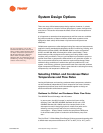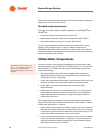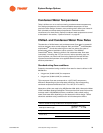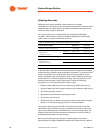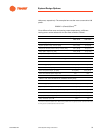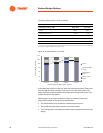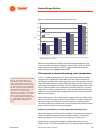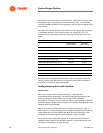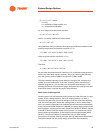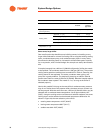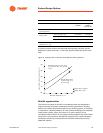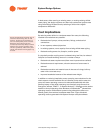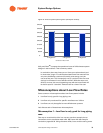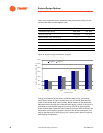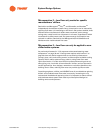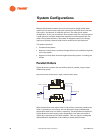
System Design Options
SYS-APM001-EN Chiller System Design and Control 35
Q = U x A
1
x T
1
, where
A = area,
U = coefficient of heat transfer, and
T = temperature difference
so, for a roughly equivalent heat rejection,
U x A
1
x T
1
= U x A
2
x T
2
and for a constant coefficient of heat transfer,
A
1
x T
1
= A
2
x T
2
Using standard rating conditions, the temperature difference between tower
entering temperature and ambient wet bulb, T
1
is
T
1
= 94.2 – 78 = 16.2°F or [34.6 – 25.6 = 9.0°C]
while at typical low-flow conditions, T
2
is
T
2
= 99.1 – 78 = 21.1°F or [37.3 – 25.6 = 11.7°C]
Therefore:
A
1
× 16.2 = A
2
× 21.1 or A
2
= 0.77 A
1
So, the tower would theoretically need only 77% of the heat exchange area to
achieve the same heat rejection capacity, simply by reducing the flow rate
from 3.0 gpm/ton [0.054 L/s/kW] to 2.0 gpm/ton [0.036 L/s/kW].
The heat exchange capacity can be altered by changing the surface area or
airflow, or some combination of the two. A cooling-tower manufacturer’s
selection program can give the exact size and power requirements. In the
example previously summarized on pages 30-32, both the cooling-tower size
and airflow (hence, required fan power) were reduced.
Same tower, smaller approach
Another option is to use the same cooling tower at a lower flow rate. In a new
system, this is a design decision, but in an existing system, it is often a
constraint that the tower cannot be changed. Given the same heat-rejection
load, the low-flow system allows the cooling tower to return colder water;
that is, the tower's approach to the ambient wet-bulb temperature decreases.
In the previous example of 450 tons [1580 kW], the same cooling tower would
have resulted in a leaving tower-water temperature of 83.5°F [28.6°C] instead
of the 85°F [29.4°C] with the smaller cooling tower. It is important to realize
that the entering temperature for the tower would be approximately 97.6°F
[36.4°C]. Therefore, the effect of reduced flow rate on chiller energy
consumption is partially offset by the lower leaving tower-water temperature.
The system would use less pump energy at the lower flow conditions.



